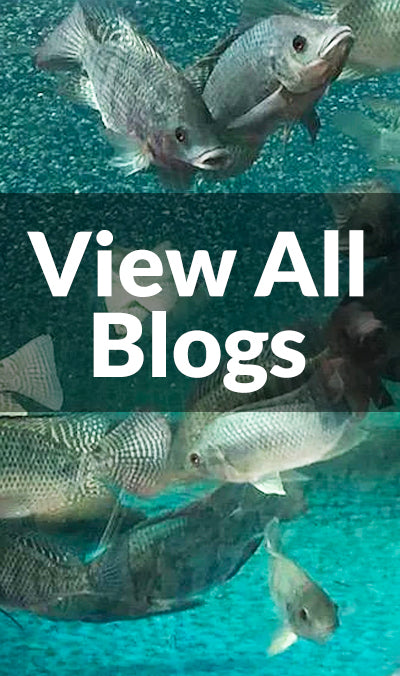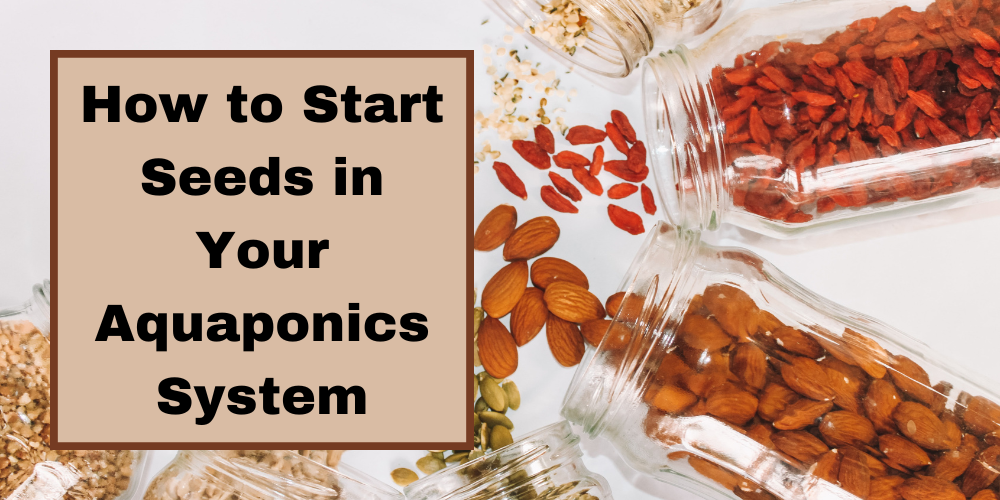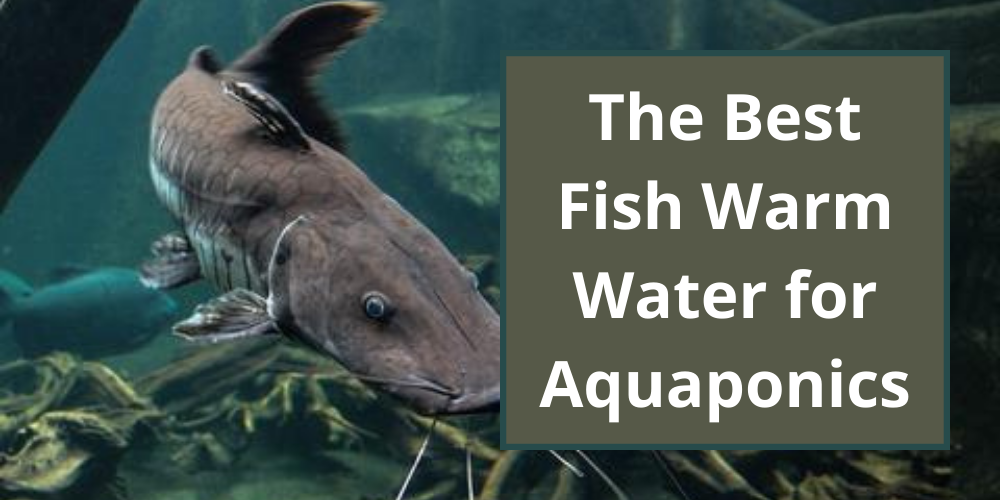If you’re looking for a hardy, fast-growing fish that adapts well to aquaponics, yellow perch might be the perfect choice. Known for their mild flavor, resilience in cooler water, and ability to thrive in controlled environments, perch are an excellent option for both new and experienced growers.
Raising yellow perch in an aquaponics system isn’t just about producing fresh, healthy fish, it’s also about creating a balanced ecosystem where fish and plants support each other. For beginners, this can feel both exciting and overwhelming:
- What size tank do perch need?
- How do you keep the water healthy?
- What’s the right feeding schedule?
This blog will walk you through everything you need to know to successfully raise yellow perch in your aquaponics setup. You’ll learn about system requirements, feeding practices, common challenges, and how to harvest perch for your table.
Understanding Yellow Perch in Aquaponics
Before you add yellow perch to your aquaponics system, it helps to understand what makes them such a strong choice for beginners.
Why Yellow Perch Thrive in Aquaponics:
- Cold-water adaptability: Unlike tilapia, which prefer warmer water, yellow perch do well in cooler temperatures, making them ideal for temperate climates.
- Hardy and resilient:They tolerate slight fluctuations in water quality better than more delicate fish.
- Balanced growth rate:Perch grow steadily without overwhelming your system, which is helpful if you’re still learning to balance fish and plants.
Ideal Water Conditions for Perch
- Temperature:65–75°F (18–24°C) is optimal, but perch can survive in water as low as 55°F.
- pH range: Between 6.5 and 8.5, with 7.0–7.5 being the sweet spot.
- Dissolved oxygen:Perch thrive with high oxygen levels (above 5 mg/L). Aeration is essential.

A. Physical Characteristics of Yellow Perch
Yellow perch are a type of freshwater fish popular in aquaponics systems due to their hardy nature and fast growth rate. They are characterized by their vibrant yellow-green color and distinctive markings, including dark vertical bars on their sides. Perch can grow up to 12 inches in length and live for several years in a properly maintained aquaponics system.
B. Yellow Perch Behavior and Socialization
Perch are social fish and do best in groups. They are usually active during the daytime and feed primarily on small insects and other small aquatic creatures. In an aquaponics system, yellow perch will swim around their tank and may even jump out of the water from time to time. Providing enough space for your perch to swim and socialize is essential, as overcrowding can cause stress and reduce their growth rate
C. Feeding Habits of Yellow Perch
Perch will eat a variety of foods, including commercial fish food, live or frozen foods, and plant material. When raised in an aquaponics system, perch can help improve the water quality of the system by feeding on the waste produced by the plants. It's essential to provide a balanced diet for your perch, as overfeeding or feeding them the wrong types of food can cause health problems and reduce their growth rate.
It's recommended to feed your Perch two to three times a day, providing only as much food as they can consume in two to three minutes. This will help to minimize waste and maintain water quality in your system. Regular monitoring of your perch's diet and behavior will help you ensure they receive the proper nutrients and are healthy and happy in your aquaponics system.
Setting Up Your Aquaponics System for Yellow Perch
A successful perch system starts with the right setup. While yellow perch are hardy, they still need a properly sized tank, good filtration, and balanced plant pairings to stay healthy.
Tank Size Requirements:
- Small-scale systems:A minimum of 50–100 gallons works if you’re raising a handful of perch.
- Mid- to large-scale systems: 200–500+ gallons is better if you want steady fish harvests and larger plant production.
- Stocking density: Beginners should aim for 0.25–0.5 pounds of fish per gallon of water until they’re confident with water quality management.
Filtration and Biofiltration:
Perch produce waste that needs to be broken down into plant-friendly nutrients. A strong mechanical filter and biofilter are non-negotiable:
- Mechanical filters remove solids like uneaten food and waste.
- Biofilters use beneficial bacteria to convert ammonia into nitrites and then into nitrates.
- Without a biofilter, water quality can crash quickly and stress your perch.
Plant Pairings for Perch
Perch thrive in cooler water, which pairs well with:
- Leafy greens:lettuce, kale, spinach.
- Herbs:basil, parsley, mint.
- Cool-tolerant fruiting plants:strawberries, peas.
Choosing the right plants ensures your aquaponics system stays balanced and both fish and plants flourish.
Feeding Yellow Perch in Aquaponics
Feeding your perch correctly is one of the most important factors in their growth and health and it also directly impacts your plants. Overfeeding leads to poor water quality, while underfeeding slows growth. Striking the right balance is key.
What Yellow Perch Eat
Yellow perch are carnivorous by nature, but they adapt well to commercial fish feeds in aquaponics:
- Commercial pellets:High-quality, protein-rich pellets are best for consistent growth.
- Natural feeds: Worms, insects, and small crustaceans can be used as supplemental treats.
- Plant-based feeds:Perch generally don’t eat plants, so you don’t need to worry about them nibbling your crops.
Feeding Frequency
- Fingerlings:2–3 times per day in small amounts.
- Juveniles and adults:1–2 times per day.
- Rule of thumb:Only feed what they can eat in 5 minutes. Leftover food will sink and cause ammonia spikes.
How Diet Affects the Whole System
- Too much food can lead to poor water quality. Uneaten food increases ammonia and nitrite levels, stressing fish and harming plants.
- Balanced diet results in strong growth. Healthy perch produce nutrient-rich waste, fueling healthy plant growth.

Common Challenges When Raising Yellow Perch
Even though yellow perch are hardy, beginners often run into common challenges that can affect fish health and system balance. Knowing these issues and how to respond will save you time, money, and frustration.
1. Water Quality Issues:
- Problem:Ammonia or nitrite spikes caused by overfeeding or insufficient filtration.
- Solution: Regular water testing, proper biofiltration, and avoiding excess feed.
2. Seasonal Adjustments:
- Problem: Water temperatures dropping too low in winter or climbing too high in summer.
- Solution: Use heaters, chillers, or shading depending on your climate. Perch prefer cooler water but still need consistency.
3. Slow Growth Rates:
- Problem:Perch growing slower than expected, often tied to feeding habits or system imbalance.
- Solution:Adjust feed type and frequency, and ensure plants aren’t stripping too many nutrients from the water.
4. Disease and Stress:
- Problem:Fish becoming sluggish, losing appetite, or showing signs of infection.
- Solution: Keep stress low by maintaining clean water, consistent temperatures, and avoiding overcrowding.
Harvesting and Using Yellow Perch
Reaching harvest time is one of the most rewarding parts of raising yellow perch in aquaponics. It’s the point where all your effort pays off and you can enjoy the fresh, healthy fish you’ve grown yourself.
When Are Yellow Perch Ready to Harvest?
- Growth timeline:Under good conditions, perch can reach 8–10 inches in about 12–16 months.
- Market size: Many growers harvest when fish weigh around 1/3 to 1/2 pound.
- Factors that affect growth:Water temperature, feeding frequency, and stocking density.
Harvesting Techniques
- Netting: Use a soft net to reduce stress and injury to the fish.
- Stunning & humane handling:If you plan to eat your perch, always follow humane practices for dispatching and cleaning.
- Staggered harvesting: Instead of harvesting all at once, remove mature fish gradually. This frees up space for younger perch to grow faster.
Culinary and Market Value
- At home: Yellow perch are prized for their mild, flaky fillets that work well pan-fried, baked, or grilled.
- For sale: In some regions, perch have strong local demand, offering small-scale aquaponics farmers a potential income stream.
FAQs About Yellow Perch in Aquaponics
When you’re just starting out, it’s natural to have questions. Here are some of the most common beginner FAQs about raising yellow perch in aquaponics.
1. Are yellow perch good for aquaponics?
Yes! Yellow perch are hardy, adaptable, and thrive in cooler water conditions. They’re also less aggressive than some other fish species, making them a great choice for beginners.
2. How fast do yellow perch grow in aquaponics?
Under optimal conditions, yellow perch typically reach harvest size (8–10 inches) in 12–16 months. Growth rates depend on water temperature, feed quality, and overall system management.
3. What temperature do yellow perch need in aquaponics?
Perch prefer cooler water and do best between 65–75°F (18–24°C), but they can tolerate ranges outside this with proper care.
4. What plants grow well with yellow perch?
Cool-season crops such as lettuce, kale, spinach, peas, strawberries, and herbs pair perfectly with perch in aquaponics.
5. Do yellow perch eat plants?
No, yellow perch are carnivorous and will not eat your crops. They rely on pellets and insects or worms as their main diet.
Conclusion
Yellow perch are an excellent choice for aquaponics systems. They’re hardy, adaptable to cooler water, and pair well with a variety of plants. With the right setup, feeding practices, and consistent water management, perch can provide you with a steady source of fresh, healthy protein while fueling lush plant growth.
This guide has given you the foundation:
- The basic needs of perch in aquaponics.
- How to set up your system.
- Feeding guidelines and plant pairings.
- Troubleshooting common issues.
- What to expect when it’s time to harvest.
But reading is only the first step. The real success comes from applying these concepts in a way that avoids trial-and-error and gives you confidence in every decision you make.






Leave a comment (all fields required)